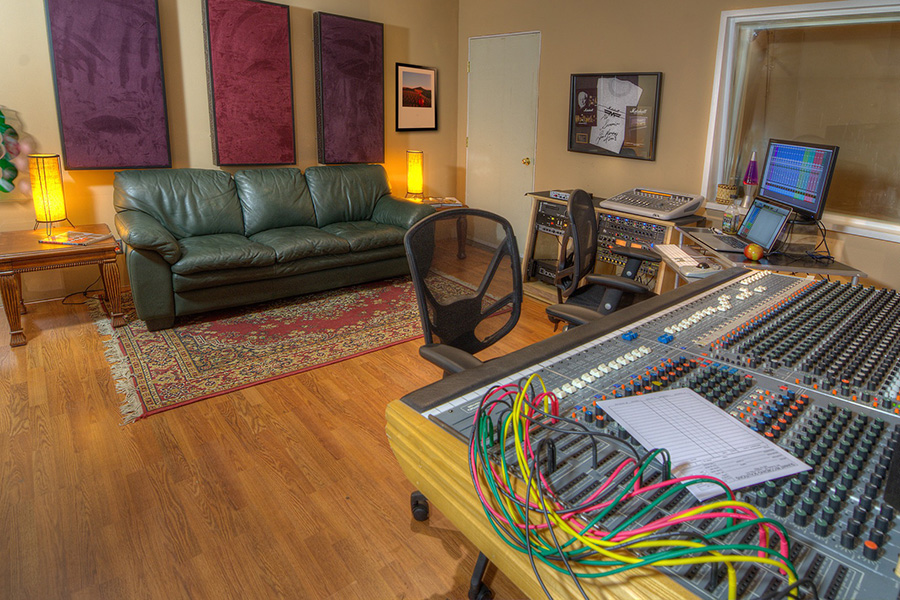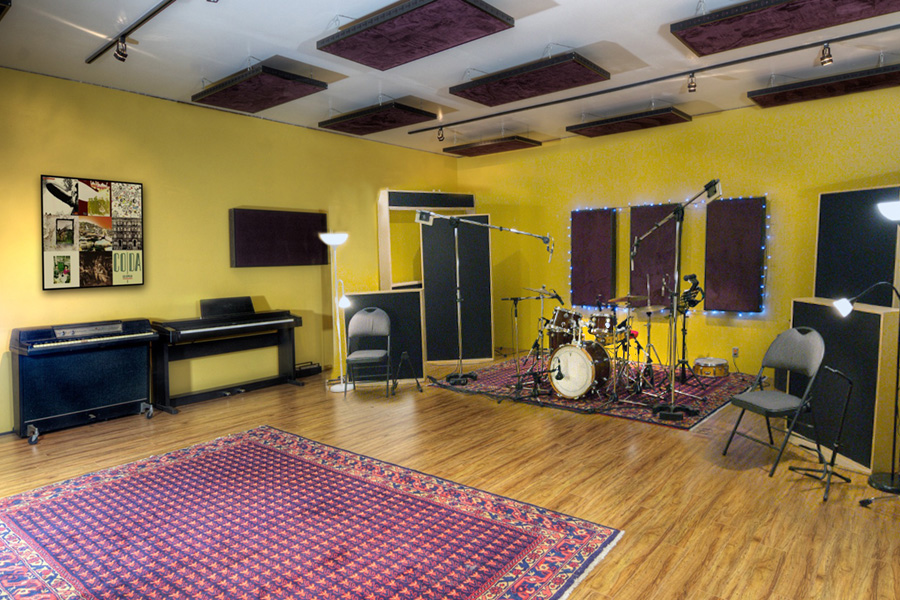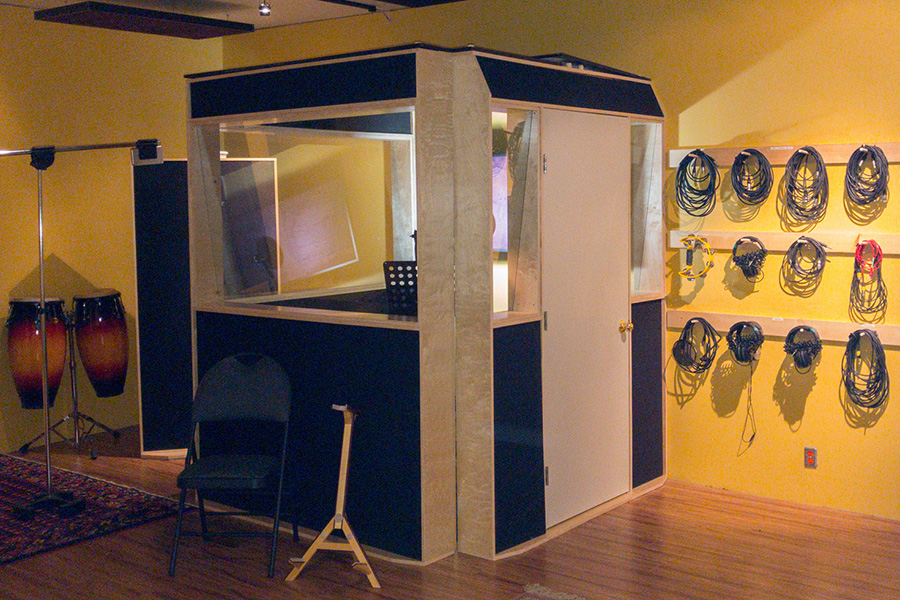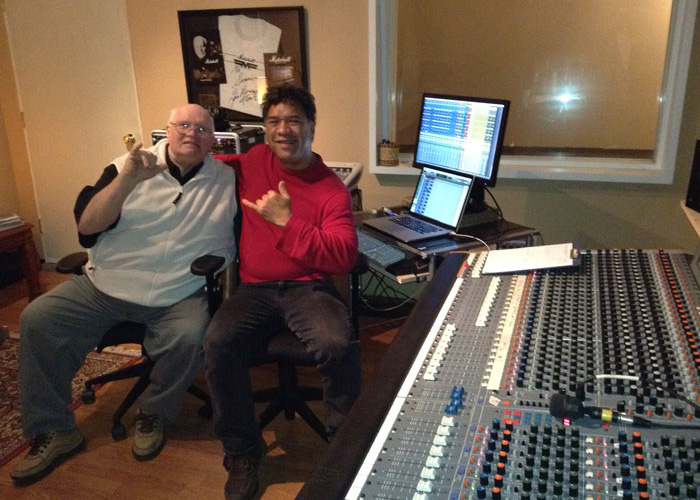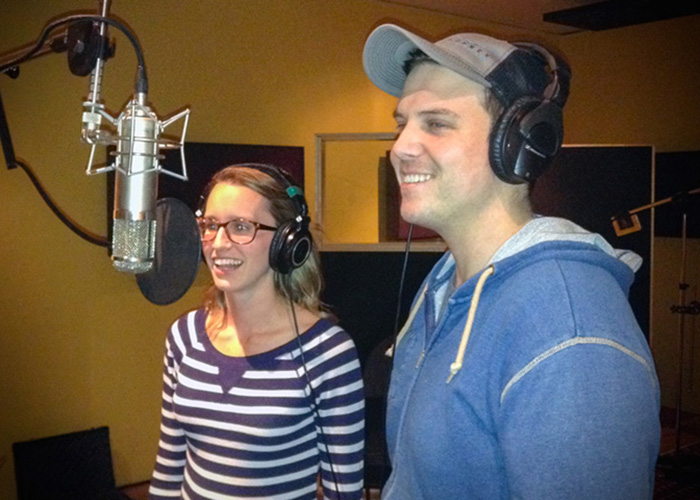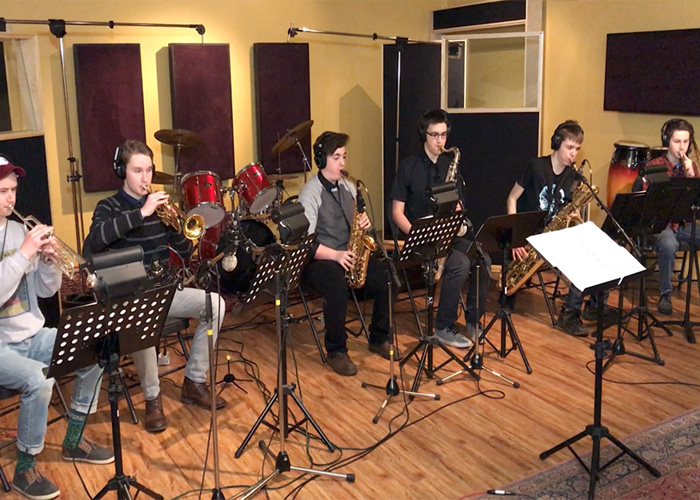Studio Views
Studio Equipment
• Console:
Soundtracs C4400 - 28-Mic Inputs x 12-Buss x 24-Monitor
Classic split input console. (1986)
• Monitors:
Tannoy - Super Reds HPD385A (Yes another classic)
Yamaha - NS-10’s with Bryston B4 - Power Amp
IK Multi-Media - MTM Powered Monitors
Avatone Cube - Powered Monitor
• Computer & DAW Hardware:
MacBook Pro 2.8GHz Quad Core i7 15” with 16 Gigs RAM
1 Tera - Seagate 7200 rpm Firewire 800 External Drive
Viewsonic 19" 1980x1080 px External Monitor
Focusrite - Clarett 8Pre X
Focusrite - Saffire Pro40 - 8 Chan Mic Pre
Presonus - DigiMax FS - 8 Chan Mic Pre
• Software:
ProTools 2021.3
Waves - Platinum Bundle
Waves - SSL Series EQ/Comp
Waves - V Series EQ/Comp
Waves - IR1-V2 Convolution Reverb
Waves - Abbey Road Collection
Waves - Tune
Waves - Kramer - Ampex Tape Recorder Emulation
Slate Digital - VTM (Virtual Tape Machine)
Brainworx - SSL 9000J Channel strip
iZotope - Ozone 9 Advanced
IK Multimedia - T-Racks CS Grand collection
IK Multimedia - Amplitude 4
IK Multimedia - SampleTank 4
Klanghelm - VU Meter (Proper)
DSP-Quattro 5 - CD/DVD Burn & Back-up
• Outboard Equipment:
RUPERT NEVE - Portico II Channel MicPre/Comp/EQ
2x dbx - 160x Compressor
Warm Audio - 1176LN Compressor
ART - VLA II Stereo Compressor - Tube
TC Electronic M-300 Reverb & Delay
Korg SDD-1000 Delay
Tube works RT902 Tube Effects
Numark CD Player
• Microphones:
1x PELUSO 22-47 SE Large Diaphragm - Tube
3x RODE NTK Large Diaphragm - Tube
1x RODE K2 Large Diaphragm - Tube
2x RODE NT3 Pencil Condenser
2x RODE NT5 Pencil Condenser
3x AKG C451B Pencil Condenser
1x AKG D-112 Dynamic
2x CASCADE - Fat Head II - Stereo Pair - Ribbon
1x dbx RTA-M Omni Condenser
1x SENNHEISER - 421 Dynamic
1x SENNHEISER - e609 Dynamic
1x SENNHEISER - e906 Dynamic
1x SENNHEISER - e835 Vocal Dynamic
5x SHURE SM-57 Dynamic
2x SHURE SM-58 Dynamic
2x SHURE SM-58 Beta Dynamic
2x APEX 185 Condenser (Omni/Card)
1x APEX 435 Condenser Large Diaphragm
1x APEX - 127 Dynamic (bottom snare clip)
1x AUDUX - D6 Dynamic
1x EV - 308A Dynamic
2x Radial JDI - Passive D.I.
1x Radial J48 - Active D.I.
1x Paul Reed Smith - Active D.I.
• Headphones & Cue System:
4x SENNHEISER - HD280-Pro
1x AUDIO-TECHNICA - ATH-M50
ART HeadAmp6 Pro - with 6 more me inputs
• Studio Instruments:
Roland HP1700 electric piano. 76 weighted keys. (MIDI & internal Speakers)
Congas
Tambourine
• Miscellaneous:
Decca Tree - for orchestral recordings
Roland DR-660 Drum Machine (MIDI)
Vocal Pop Shield
Various Adapters
Client Media
Audio Engineering Course
COURSE DESCRIPTION & OBJECTIVES
This is a 10 lesson course, with each class running 4 hours. It is taught one to one.
By the end of this course students will have:
An understanding of the modern computer based recording methods.
Techniques & tips for proper microphone, selection and placement.
Understanding the importance and workings of compression, equalizers, gates, reverb, echo.
Introduction to running of a session in the recording studio environment.
Introduction to Live Performance setup and sound mixing (F.O.H) - (if available)
1. Recording Input Devices
2. Recording Interfaces
3. Outboard Gear & Effects
4. Recording & Playback - Signal flow on an analog console
5. Analog Mixing - with a traditional analog console
6. Introduction to live F.O.H (Front of House ‘Digital’ mixing. Using a digital console
7. Digital mixing with a computer ITB ("In The Box")
8. Continue ITB mixing (2 of 3)
9. Continue ITB mixing (3 of 3)
10. Final “Mixdown”. Mastering standards. Exporting for different file formats. DAW tips and trick and choosing a DAW.
Details
-
1. Recording Input Devices
- Microphones - Different types. Phantom Power, Polar Patterns.
- Line Levels & D.I. Boxes - How they work . (Passive & Active - power)
- M.I.D.I. - How it works
-
2. Recording Interfaces
- Mic pre-amplifiers - Phantom Power in circuit diagrams.
- Line Inputs
- Professional Levels & Consumer Levels (VU, dBu, Vac)
- MIDI Inputs
- Balanced & Unbalanced cables
- How to properly wrap cables
- How to ‘zero’ a mic stand
-
3. Outboard Gear & Effects
- Equalisers - [Bell, Shelving, HP, LP. Q of the equalizer]
- Compressors - [Ratio, Threshold, Attack, Release, External Trigger]
- Dynamic Compression [Frequency dependant compression]
- De-Essers - [Threshold, Frequency, Attenuation]
- Noise Gates [Attenuation, Threshold, Attack, Hold, Release, Bandpass EQ]
- Reverbs - [RT60, Chamber, Spring, Halls, Plates, Non-Lin, IR’s]
- Delays/Echos, [time ms, feedback, ping-pong, HP, LP]
- Modulation (chorus, vibrato, harmonizers, panning)
-
4. Recording & Playback - Signal flow on an analog console.
- Block diagrams of analog consoles, in relation to a digital workflow.
- Mic Pre Amps
- Equalizer (EQ)
- Insert points (additional discussion in lesson #6)
- The Patchbay
- Grouping/Bussing routing
- Record routing inputs to DAW channels
- Block diagrams of analog consoles, in relation to a digital workflow.
- DAW Playback routing
- Cue mixes to musicians
- Effects Sends & Returns
- Mix groups & busing
- Master Faders
- Classic ‘Spilt’ and modern ‘Inline’ console layouts
-
5. Analog Mixing with a traditional analog console
- Mixing a song the traditional analog method. (used in all music mixing until about 2010). ** Still used by most “bigtime” mixers.
- Setting up order of channels on the console. Fill out the ‘scribble strip’ on the console.
- Using the console EQ to “improve” the recorded instruments.
- Using “channel inserts” to plug in various gear in the “outboard” rack.
- Setting up “Aux Sends & Returns” to add various external reverb & delays in the “outboard rack”.
- Setting up “Groups” to consolidate instrument groups.
- Show how the traditional patchbay works & how it relates to the (?modern?) DAW mixing method.
- Stereo Mix Buss 'headroom’.
-
6. Introduction to “Live Mixing” (F.O.H) Using a digital console.
- Understanding the concept of the ‘Virtual Channel’ layout.
- Using the consoles, ‘layers’ to address various ‘Inputs’ and ‘Outputs’.
- Setting up different ‘Independent’ mixes for the ‘House’ and ‘Monitors’.
- Understanding the use of the ‘1/3 Octave’ graphic EQ on each output.
- Ringing out the floor monitors for feedback. Cupping the mic, etc.
- The ability to store and recall ‘Scenes’. Various band setups, or stepping through scenes in a play, etc.
- Ability to use a ‘Digital Snake (Ethernet cable)’ with remote mic pre’s, to save costs on using the traditional ‘Mic Snake’.
- On board ability for recording multi-track audio, to a USB stick or external drive.
-
7. Digital mixing with a computer (ITB - "In The Box")
- Setting up order of channels on the screen. Label each ‘scribble strip’.
- Setting up [Source - inputs] and [outputs] for each channel strip.
- Creating - Group buses or VCA’s and a Master Fader.
- Labelling - “Marker” Cues. I.E. Verses, Choruses, Bridges, Solo’s, etc.
- Using “Inserts” to install various plug-ins. I.E. EQ’s, Compressors, Gates, etc.
- Demonstrate - setup of “Dynamic EQ” / “Frequency Dependant Compression” plugin.
-
8. Continue ITB mixing (2 of 3)
- Setting up “Aux Sends & Returns” to add various external reverb & delays effects.
- Tracks that are MIDI files, need to have at V.I. (virtual instrument) inserted, to be able to hear the performance.
- Demonstrate setup of “SIM’s” (simulation) plugin’s for guitar and bass.
-
9. Continue ITB mixing (3 of 3)
- Discuss “Latency” and it’s various issues in the digital A/D - D/A plugin processing world.
- Discuss “Nyquist Frequency”. Sample rates (44.1khz, 48khz, 88.2khz, 96khz). Bit depth (16 bit, 24 bit).
-
10. Final “Mixdown”. Mastering standards. Exporting for different file formats. DAW tips and trick and choosing a DAW.
- Choosing your export > File format, sample rate & bit depth.
- Discuss the purpose of ‘Mastering’.
- Exporting for different file formats (.wav, mp3) and various mastering level standards (RMS, PEAK, LUFS).
- Backup and storage of your projects.
- Sound-replacer. To fix poor drum sounds, or performances.
- Warp Clips. To fix timing issues of a performance.
- The ‘Tuning’ App - [hand tuning] - To fix tuning issues.
- Cut & Paste. To save client costs during recordings, or provide consistency.
- Work in Grid mode, based on the tempo of the song. Allows for quicker song arrangement changes, etc.
- Computer choices, based on CPU, RAM, Screen (pixel) sizes.
- External Hard-drives.
- Choosing a DAW. ProTools, Logic, Studio One, Cubase, etc.
- Choosing a AD/DA Input interface.
- Dongles - iLOK used by most software companies for piracy protection.
